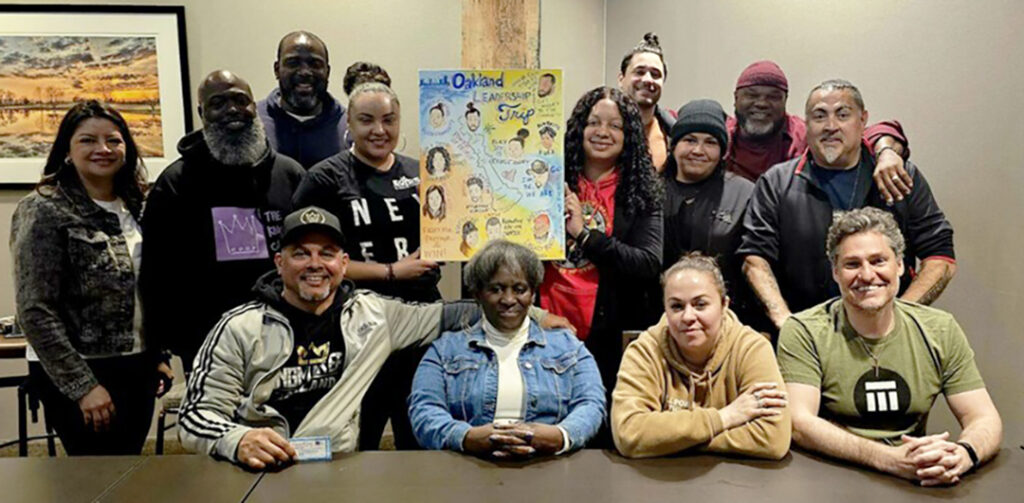

4/5/24 Montgomery, AL – In a deeply transformative journey, Juma Crawford, the Executive Director of the Oakland Fund for Public Innovation, led a group of community and government leaders from Oakland to Montgomery, Alabama. The group connected with the Equal Justice Initiative and explored key historical sites, including Bryan Stevenson’s Legacy Museum, the National Memorial for Peace and Justice, and the “Mothers of Gynecology” Monument, under the guidance of artist and historian Michelle Browder.
At the Legacy Museum, the delegation was confronted with a visceral narrative of the transatlantic slave trade and its insidious evolution into systemic racial injustices—spanning the prison industrial complex, Jim Crow laws, and rampant lynching. This educational visit was more than just an encounter with history; it underscored the economic underpinnings of these injustices, particularly the reliance on slave labor for cotton production, which once powered the American economy.
 Inspired by Stevenson’s efforts in Alabama, the Oakland leaders are determined to replicate similar initiatives back home. They plan to launch educational exhibits that delve into racial history and promote advocacy, aiming to enlighten and mobilize the Bay Area community toward greater racial justice.
Inspired by Stevenson’s efforts in Alabama, the Oakland leaders are determined to replicate similar initiatives back home. They plan to launch educational exhibits that delve into racial history and promote advocacy, aiming to enlighten and mobilize the Bay Area community toward greater racial justice.
The journey also included a visit to the Memorial for Peace and Justice. Here, the leaders paid their respects at a site commemorating over 4,400 Black individuals lynched between 1877 and 1950. With over 800 corten steel monuments, each representing a different county where these horrifying acts occurred, the memorial stands as a stark, tangible reminder of America’s brutal past and the enduring need for reconciliation.
Another profound moment was at the “Mothers of Gynecology” Monument, dedicated to Anarcha, Lucy, and Betsey—three enslaved women who endured horrific medical experiments at the hands of Dr. J. Marion Sims. The sculptures poignantly capture the inhumane treatment these women suffered, yet also symbolize their incredible resilience and sacrifice.
The delegation’s journey culminated in a symbolic walk across the Pettis Bridge in Selma, a historic site of Black empowerment that now shows signs of neglect, mirroring the ongoing struggle for racial equality. This powerful act underscored the pressing need for reparations and measures to address the generational trauma endured by Black and Indigenous communities.
 This trip was more than an educational tour; it was a pilgrimage of remembrance and advocacy. It deeply moved all involved, rekindling their commitment to pursue justice and healing. The lessons learned in Montgomery are now seeds for change, poised to grow as these leaders bring their renewed resolve back to Oakland. Their journey underscores a powerful message: understanding the past is crucial to addressing the present and reshaping the future. This experience, steeped in the harsh realities of racial injustice yet inspired by the resilience witnessed, has galvanized the Oakland leaders to champion a future where such atrocities are never repeated.
This trip was more than an educational tour; it was a pilgrimage of remembrance and advocacy. It deeply moved all involved, rekindling their commitment to pursue justice and healing. The lessons learned in Montgomery are now seeds for change, poised to grow as these leaders bring their renewed resolve back to Oakland. Their journey underscores a powerful message: understanding the past is crucial to addressing the present and reshaping the future. This experience, steeped in the harsh realities of racial injustice yet inspired by the resilience witnessed, has galvanized the Oakland leaders to champion a future where such atrocities are never repeated.
